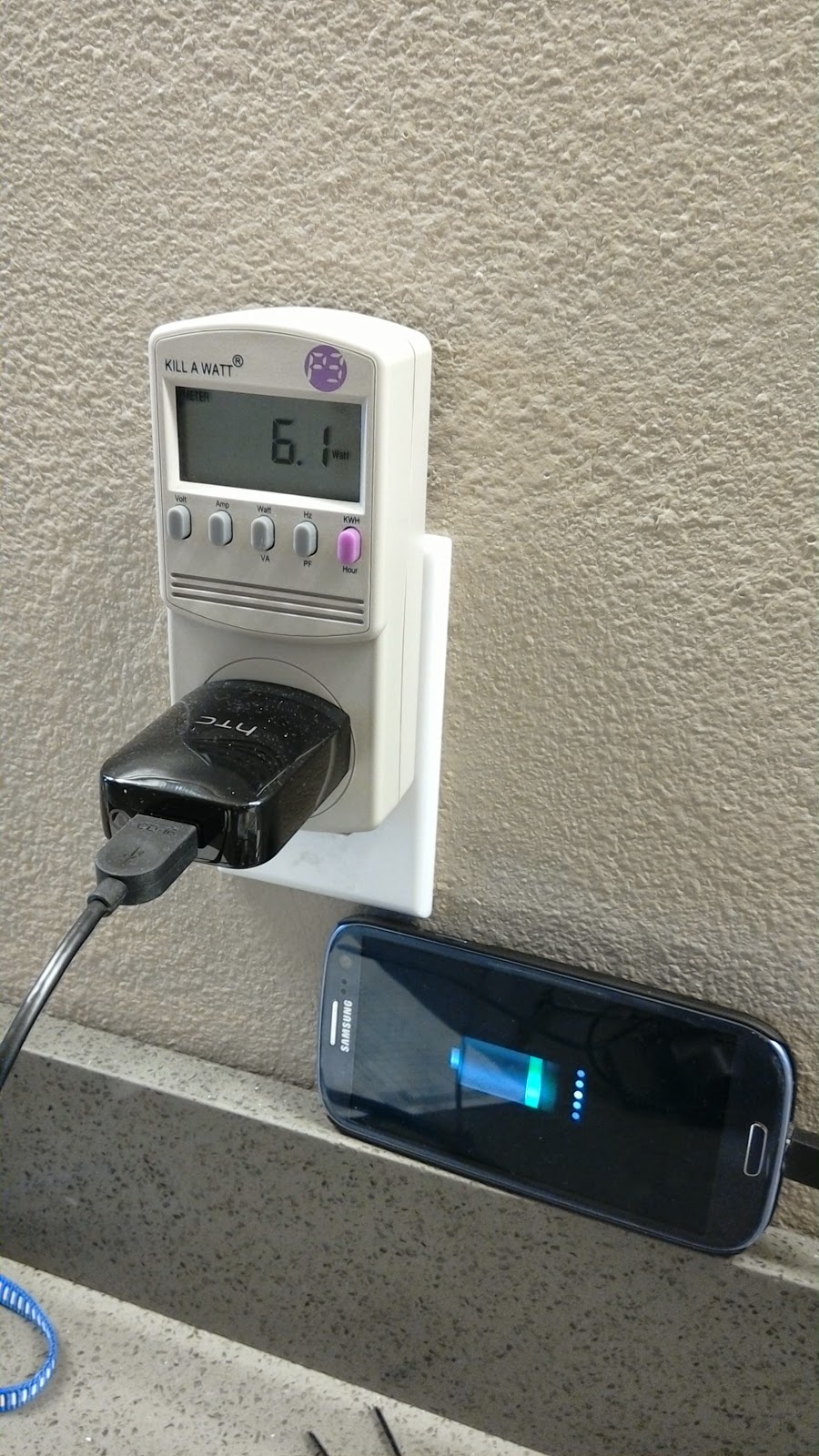Since I wrote that article two years ago, wall charger technology has jumped forward. Four or five years ago, smartphones came with chargers that supplied power to your phone at 0.5 amps. Over the past 3 years, most phones doubled that power to 1 amp. This is why your phone will give you a "not enough power to charge" warning when you try to use an old phone charger. Now, most phones come with 1.5 amp chargers to charge even faster. Some phones and most tablets come with 2.1 amp chargers for their larger batteries. Just becoming easy to find in the market are chargers certified by Qualcomm (the manufacturer of most smartphone chips) with their "Rapid Charge 2.0" rating. This feature zooms the power up to get your phone up to an 80% charge as quickly as possible. The rating promises to give you 8 hours of power in 20-30 minutes.
I did a quick test of HTC's Rapid Charge 2.0 certified charger ($35 direct from www.htc.com). Here's what I found.
 |
| Nothing plugged into the charger |
 |
| Smartwatch draws 1.4 watts to charge... about 1/2 the power of a modern night light or 1/6 of an old fashioned single Christmas light |
Next, I plugged in my old work-issued Samsung Galaxy S3 to test an older phone that doesn't have Rapid Charge 2.0 technology. It charged the phone just fine up to 100% but did it at the same rate as the Samsung charger from the box. Note the power drawn:
Next, I took an HTC One M9 phone (as modern as you can get...it came out yesterday). This phone is Rapid Charge 2.0 certified. First, I charged it from 67%, then I charged it from 4% to 100:
As you can see, the charger charges at 15 watts. This is a lot of power in the phone world, but still only about the same as a compact fluorescent light bulb that puts out 100 watt equivalent light. Rapid Charge 2.0 chargers will frequently be listed as "18 watt rapid chargers" but you should make sure it has the Qualcomm certification. Once the phone gets up to 80%, it tells this to the charger and the phone and the charger drop to 6 watts of power (the same as older smartphones) to top up the phone the rest of the way. This prevents the battery from shortening its life or worse, exploding into flames. Part of the Qualcomm certification requires that the charger prevents overcharging and it also monitors the temperature of the phone during charging to lower the power if your phone gets too hot while charging. Exploding phones should become a thing of the past! (I never believed those phones blew up without some mistreatment at some time in its lifetime).
As you can see, modern chargers are downward compatible and can power all of your old devices as they won't take more than they were designed for. I highly recommend purchasing a rapid charger. I can have a phone almost dead, throw it on the charger while I put on shoes and a jacket, and then grab my phone with a couple of hours of power added right in those few minutes. Amazon.com has numerous certified Rapid Chargers for under $20 and some phones, like the Motorola Nexus 6, come with them out of the box. They also work from manufacturer to manufacturer. My wife has two Moto rapid chargers and I top up my HTC with them everyday.
Let me know if you have any other questions about chargers in the comments below.

